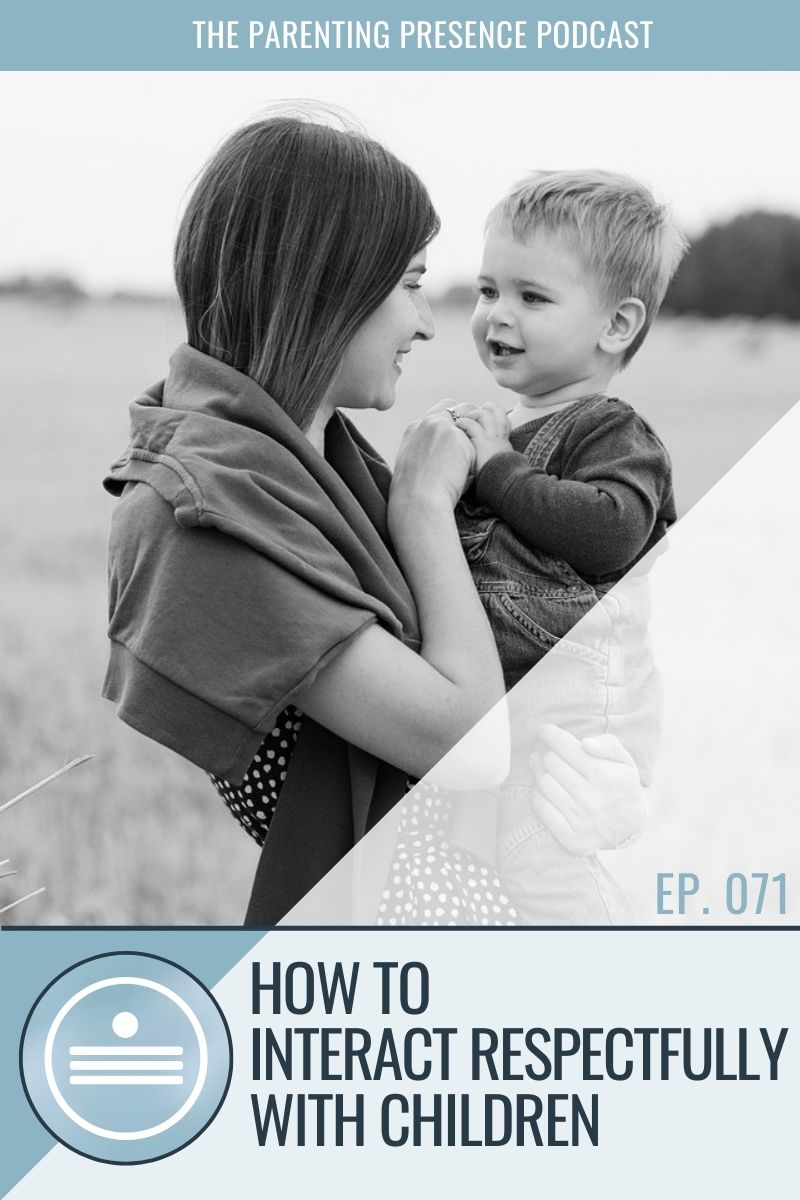
Being respectful with children, no matter how frustrating they can be at times, is such an important contributing factor to their overall development. When we treat children with respect, not only do they do better, we do better too!
One of the things that makes the transition into the new school year more smooth is to maintain a strong relationship with our children. Strong relationships depend on respectful interactions.
Respectful interactions are not to be confused with permissiveness.
Nor is it the same as catering to the child’s every wish.
In another episode, we also talked about being respectful of the child, and how that fits into a system of limits and freedoms. The way we communicate respect to the child is through respectful interactions. What we need to keep in mind is that the limits that we set for our children will be more effective when they are set in a generally positive atmosphere. The kind of atmosphere that conveys respect towards the child and acknowledgement of them as an individual.
The way we interact with our children in general, outside of times when we need to set limits, influences our relationship with them. And this relationship will support our efforts when we do need to set limits around what is allowed, or where, or for how long. But perhaps an even more more important point to treating children with respect is this:
Respectful interactions help the child develop a healthy sense of self-esteem.
It is important to model respect so that children develop a sense of what that feels like. Sometimes it may not always be clear what respectful interactions with children may look like. And so I wanted to spend a little bit more time talking about creating this atmosphere of respect toward children through the ways in which we choose to communicate with them. Our communication should be based on these guiding principles:
- Seeing your child as an individual
- Providing them time, space, and attention
- Keeping their age in mind
- Model respect & reciprocity
Let’s understand that “respectful” does not mean approving. It does not mean permissive either. It means seeing a child as a worthy human being and treating them with dignity. So of course, when we are able to see them this way, it helps them do well and helps them thrive. And this is because respect sends a series of affirming messages. When we treat children with respect, it is like we are telling them “I see you — you are special.”
There is no better foundation for a strong relationship with our child.
So let’s get practical! In today’s episode, I discuss 30 practical examples of what that communication style may look like. If you’d like to have an easy-access visual reference to these ideas, you can get a printable version sent to your email (see the form below). Print it out or download to your phone and have it available on-the-go for daily reference.
In this guide, I give you 30 examples of what respectful interactions look like. Why 30? So it’s easy to try for a month. Make a commitment for a month to pick one idea a day to try, and see what happens.
You will notice your relationship strengthen.
Let’s remember that when we treat children with respect, they do better. Not only do our children do better, we do better too! If we don’t grasp that, we miss out on a very important emotional resource that can help us feel grounded and confident, and even help us thrive too in our parenting journey. We explored exactly how this works in Episode 046, if you’d like to check that out.
Additional episodes relevant to this topic:
- Meeting the Child’s Needs vs. Bending to Their Wishes (TPP 030)
- When You Cannot Meet Your Child’s Needs, Things to Keep in Mind (TPP 041)
- One Must-Read Book On Emotional Regulation You Cannot Miss (TPP 066)
If you enjoyed this conversation, it would mean the world to me if you’d leave a rating and review on iTunes. That’s the best way to support this podcast and help other parents find it too.
